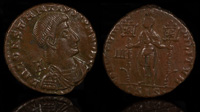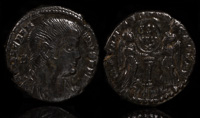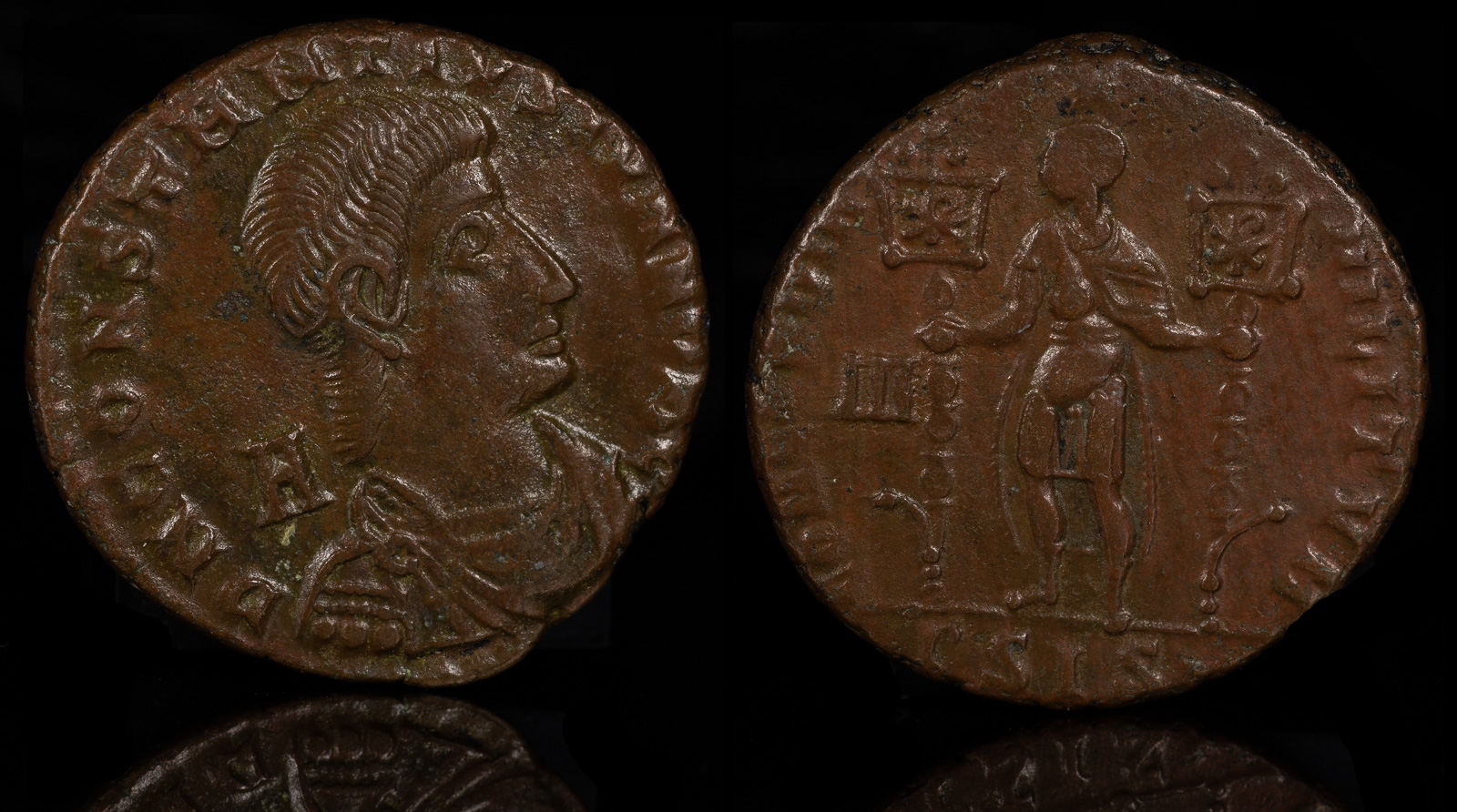Centenionalis
View All Tags
The Centenionalis typically had a value of 100th of a solidus (the primary gold coin of the empire), making it part of a complex monetary system where various denominations in bronze and copper were issued alongside the gold and silver coins. These smaller coins were crucial for daily transactions and the functioning of the economy, allowing for more precise pricing in local markets and ensuring that even the lower classes had access to currency. The introduction of the Centenionalis was part of a broader series of coins known as the radiate or antoninianus family, which included various types and sizes of coins, often bearing the image of the emperor or other symbols of imperial authority.
The design of the Centenionalis was typically modest compared to the larger silver and gold coins of the time. The obverse commonly featured the portrait of the reigning emperor, while the reverse often depicted allegorical figures, such as Virtus (virtue), Fides (faith), or Pax (peace), reflecting the emperor’s virtues or the stability and prosperity of the empire. Some examples of the coin also featured the emperor’s achievements or military victories, while others showcased the gods or goddesses of Roman mythology, further emphasizing the connection between the emperor’s rule and divine favor.
Over time, as the economy continued to suffer from inflation and debasement under various emperors, the value of the Centenionalis gradually decreased, and it was eventually replaced or phased out by other denominations in the later part of the 4th century. Despite this, the Centenionalis remains an important artifact in the study of Roman numismatics, as it illustrates the economic shifts in the late Roman Empire, the efforts to maintain a functioning currency system, and the evolving role of coinage in the empire’s social and political life.

Constantius Gallus 350-351 CE

Decentius 351-353 CE

Julian II The Apostate 361-363 CE

Magnentius 351 CE
